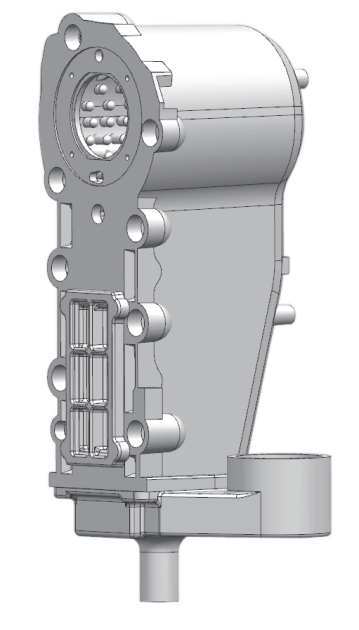Nov . 18, 2024 05:47 Back to list
Exploring Efficiency in Indirect Contact Heat Exchangers for Enhanced Thermal Performance
Understanding Indirect Contact Heat Exchangers
Indirect contact heat exchangers are crucial devices utilized in various industries to transfer heat between two fluids without them coming into direct contact. This method of heat exchange is particularly important in applications where it is necessary to keep the fluids separate due to contamination, chemical reaction, or material incompatibility.
Understanding Indirect Contact Heat Exchangers
One of the significant advantages of indirect contact heat exchangers is their efficiency. The design of these systems maximizes the surface area available for heat transfer, facilitating a significant increase in thermal performance. For instance, plate heat exchangers consist of multiple thin plates stacked together, allowing for a large surface area within a compact structure. This design not only enhances heat transfer efficiency but also minimizes the fluid volumes required, thus reducing costs and conserving resources.
in direct contact heat exchangers

Additionally, indirect contact heat exchangers are highly versatile. They can be used in various sectors, including food processing, chemical production, and HVAC systems. In food processing, for example, maintaining the purity of products is vital, and indirect heat exchange is ideal for pasteurization processes, where the food product must not be contaminated by the heating medium. Similarly, in chemical manufacturing, keeping reactive substances separate while effectively managing heat is crucial for safety and efficacy.
Furthermore, these heat exchangers also provide better temperature control. Because the two fluids do not mix, it is easier to control the temperature of each fluid independently. This property allows for enhanced process control and optimization, as industries can tailor heat transfer rates to meet specific operational requirements.
Despite their advantages, indirect contact heat exchangers do have some drawbacks. They can be more complex to maintain compared to direct contact systems, as they require regular cleaning to prevent fouling and scaling on the heat transfer surfaces. Moreover, the initial investment for high-quality indirect heat exchangers may be higher due to their intricate designs, although the long-term energy savings and efficiency often justify the cost.
In conclusion, indirect contact heat exchangers play a pivotal role in ensuring efficient and safe thermal energy transfer across various industries. Their ability to maintain fluid separation while maximizing heat transfer efficiency makes them an essential component in modern thermal systems. As industries continue to focus on energy efficiency and sustainable practices, the importance of these systems will undoubtedly grow, paving the way for innovative designs and applications in the future.
-
Centrifugally Cast Iron Water Main Pipe | Ductile Iron Solutions
NewsAug.24,2025
-
Durable Cast Steel Concrete Pipe Mold Bottom Rings & Base Trays
NewsAug.23,2025
-
Centrifugally Cast Iron Water Main Pipe for Reliable Mains
NewsAug.22,2025
-
Durable Centrifugally Cast Iron Water Main Pipe
NewsAug.11,2025
-
Centrifugally Cast Iron Water Main Pipes for Reliability
NewsAug.10,2025
-
High-Quality Centrifugally Cast Iron Water Main Pipes
NewsAug.09,2025


